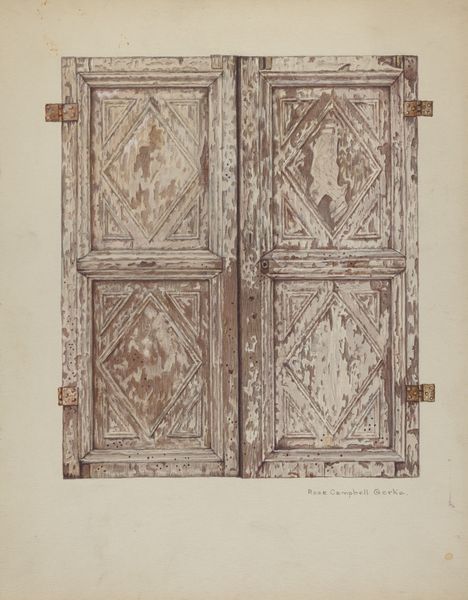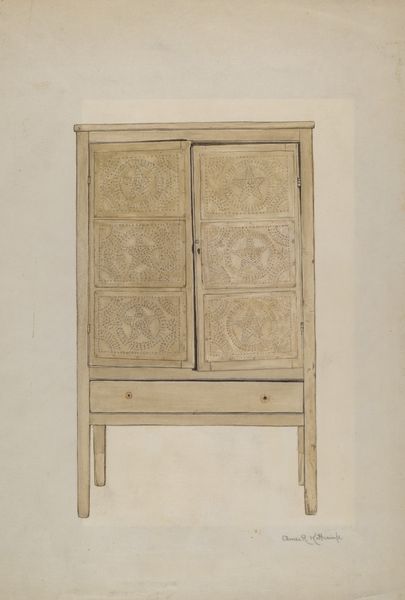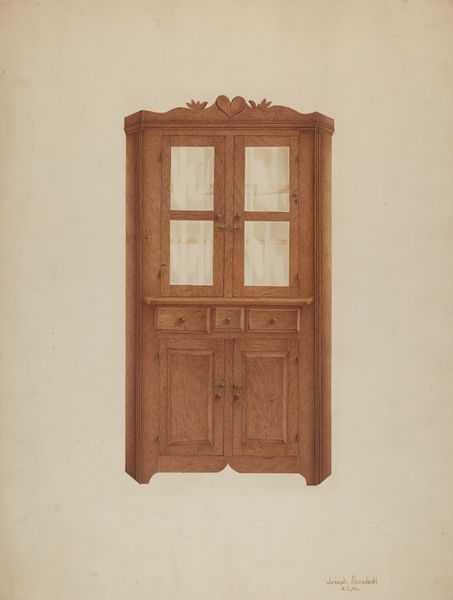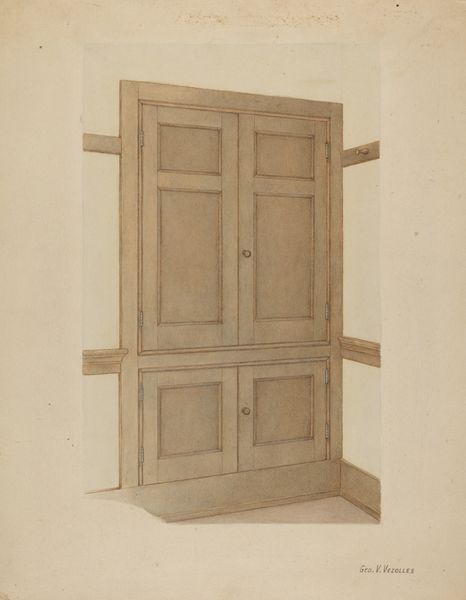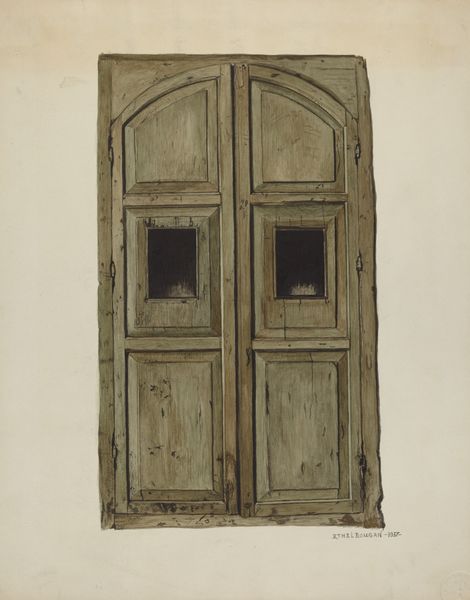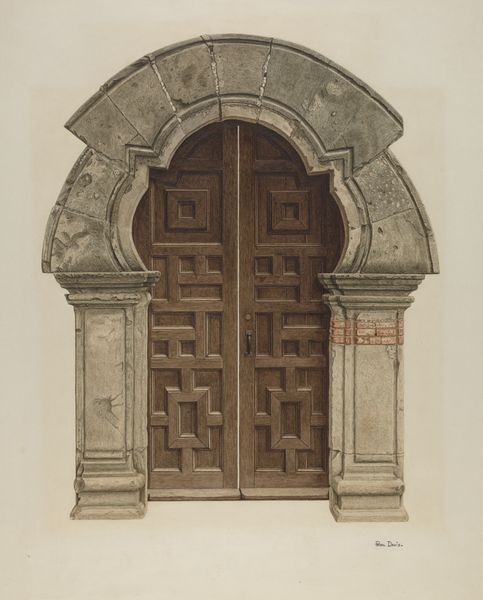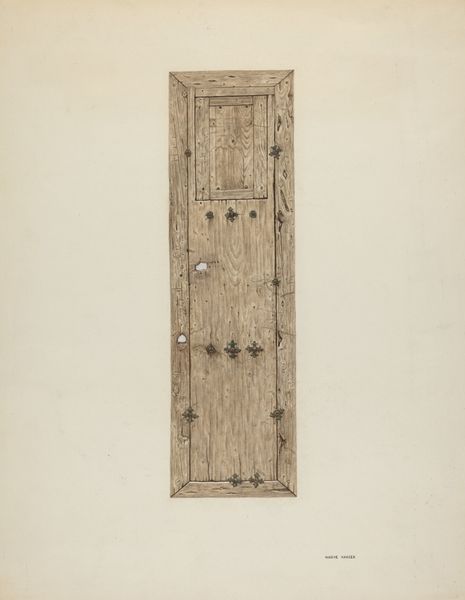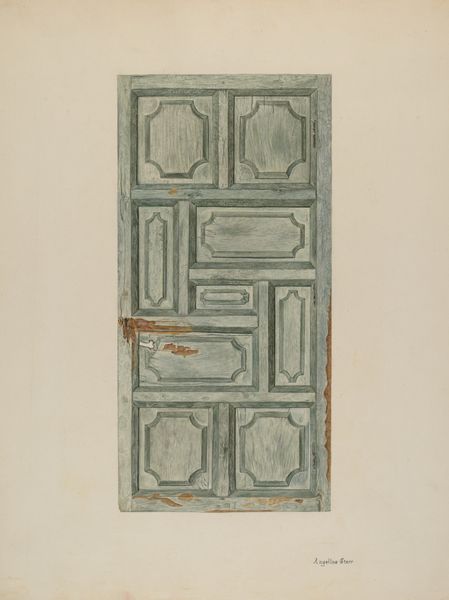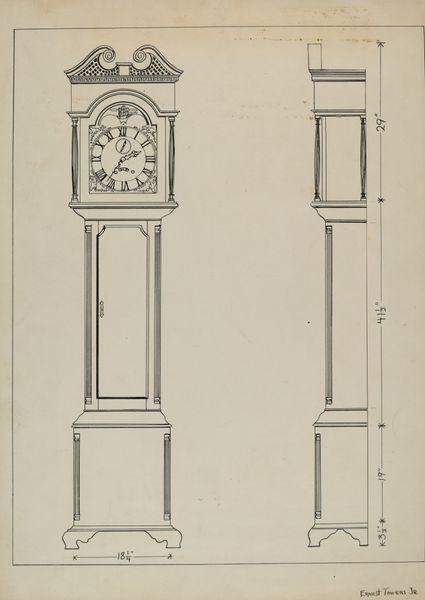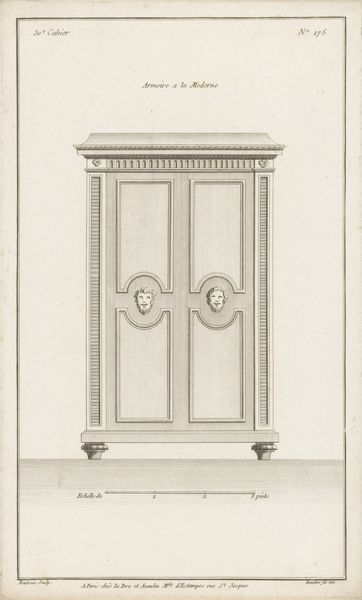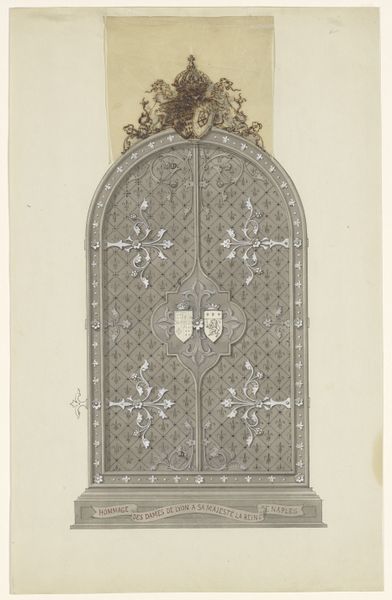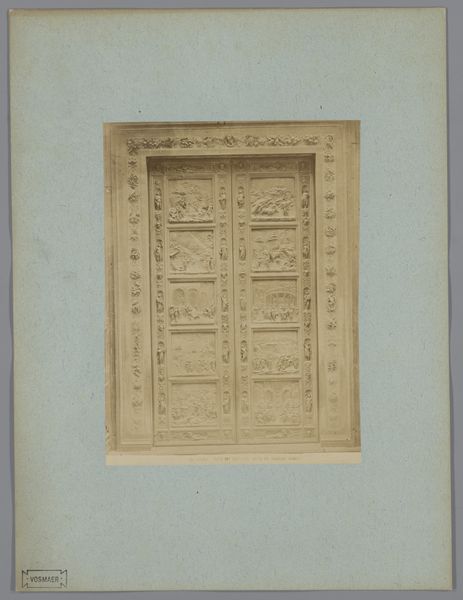
drawing, paper, pencil
#
drawing
#
paper
#
pencil
#
realism
Dimensions: overall: 35.5 x 27.9 cm (14 x 11 in.) Original IAD Object: 64"high; 18"wide; 3"thick.
Copyright: National Gallery of Art: CC0 1.0
Editor: This drawing from around 1939 by Rose Campbell-Gerke, simply called *Cabinet Doors*, rendered in pencil on paper, has this remarkable quality, of making the mundane monumental. What strikes me most is the texture, the grain of the wood so carefully replicated. How do you interpret this work? Curator: It is precisely this tension between the ordinary and the elevated that holds interest, especially given its likely creation during the Depression era. Does this representation, so precisely rendered, also become a form of preservation of value, a commentary on resourcefulness during scarcity? The choice to depict a functional object, elevating it through artistic skill, resists the prevailing social narratives of dispossession and economic precarity. Editor: That's fascinating! I hadn't considered the socio-economic context of the time. I was so focused on the formal qualities of the drawing. Curator: And those formal qualities reinforce the underlying message! Consider the symmetry, the balanced composition. Does that not hint at an attempt to restore order, visually if not economically, during a period of instability? What feelings might such an image invoke in someone facing displacement or loss? Editor: Now that you mention it, the solid, grounded nature of the doors does seem to communicate stability and security, acting as both a literal and metaphorical barrier. Curator: Precisely! Art becomes a powerful means of subtly addressing political and economic issues by focusing on the dignity of everyday objects, inviting reflection on how we attribute worth and meaning during times of hardship. Editor: That’s an insightful perspective! I now see these cabinet doors as far more than just a drawing; it's a statement. Curator: Indeed! The mundane becomes a lens through which we can view resilience and resistance, expanding our understanding of art's engagement with social realities.
Comments
No comments
Be the first to comment and join the conversation on the ultimate creative platform.
